Concept for preventive conservation, protection and preservation of the mural painting cycle in the cloister of the Emmaus Monastery in Prague
Keywords: protection of nationally valuable cultural assets, anthropogenic immissions, strategy for safeguarding and preservation, testing of new methods, environmental communication
Subject and objectives of the project
The aim of the project is to develop a conservation concept for the mural painting cycle in the Emmaus Monastery in Prague. This is a Gothic wall painting from the 14th century from the time of Emperor Charles IV in Prague. The large-format paintings are of international importance due to their iconography and artistic quality. It consists of 26 figurative paintings in 22 vault fields and is a rarity in Central and Northern Europe. The surfaces of the painting show considerable damage due to the negative effects of environmental influences such as salts, microbiological infestation and other atmospheric contamination. In addition, considerable fluctuations in relative humidity and condensation processes have damaged the paint layers.
The subject of the project is therefore a model inventory and condition survey, in the context of which the damage context and past restoration work will be fully examined for the first time. The aim is to gain knowledge about the harmful effects of environmental factors and more detailed information about the conservation status. The project pursues a comprehensive multi-method approach based on imaging techniques, i.e. non-invasive and micro-invasive analysis techniques (including grazing light, UV fluorescence, IR reflectography, XRF, Raman, near-infrared and FTIR analysis methods, photogrammetric measurement). These are supplemented by two new research approaches to improve their informative value:
- Multispectral investigation approach based on the new multi and hyperspectral camera system “Rainbow”. The system has so far only been used in museums and is to be tested on walls for the first time. In contrast to conventional devices, its high-resolution multispectral images (100 MP) can provide more precise information on material and pigment distribution or hidden properties.
- Risk analysis based on the ABC method of the Canadian Conservation Institute and ICCROM to quantify potential risks. The calculation approach makes it possible to define the extent of certain risks for museum objects. It is based on numerical ABC scales, which are used to quantify the frequency of loss events and the expected loss of value for various risks. The project extends these criteria to include environmental and cultural risks for the first time.
In addition, an environmental assessment is planned that takes into account hygrothermal relationships, the effects of climate change and the high level of pollution in Prague.
Work steps:
- Cataloging of previously unrecorded historical documents,
- Recording of the current condition of the murals, the extent and character of the damage, evaluation of the influence of external factors, in particular air pollutants of anthropogenic origin,
- Climate and environmental monitoring and assessment of the current conditions to which the murals are exposed,
- Differentiation of the original wall paintings from the subsequent overpaintings, differentiation and precise description of earlier restoration measures on individual paintings,
- Combination of different, non-invasive investigation methods for condition assessment,
- Assessment of all anthropogenic influences with regard to the visual and material changes to the wall paintings (historical overpaintings, air pollutants, wartime influences, redesign by the Beuron School at the beginning of the 20th century, restorations in the 1960s, changes since the last restoration),
- Implementation of the ABC method to create a risk management plan as one of the bases for the creation of the concept for preventive conservation, protection and preservation,
- Publications in international journals, organization of an international colloquium, publication of a publication in English to document project results in order to achieve the broadest possible international impact,
- 3D representation of the painting and the cloister for visitor-friendly communication
the significance of the murals.
Innovation and exemplary nature of the project
The complex research approach is exemplary for the Czech Republic in its scope and with such an interdisciplinary approach. This includes the use of imaging and non-invasive analysis techniques to determine pigments and dyes and new detailed information on anthropogenic damage. Equally innovative and promising is the further development of the “Rainbow” multi- and hyperspectral camera system for mural painting applications and the resulting possibility of high-resolution spectral images for detailed information. The technology has not yet been fully researched. Their further development contributes to the knowledge gained in practice. It fills a desideratum in conservation research, in which multispectral imaging is becoming increasingly important for analysis and visitor-friendly communication. The testing of the ABC method in a historical building context and in the Czech Republic and Germany is also unique. With the addition of cultural and environmental factors, the risk assessment tool has been usefully developed further and is therefore relevant in the context of climate change-related damaging events.
The conservation concept and the research methods are exemplary for the interdisciplinary approach to wall paintings. The project results make an important contribution to understanding the techniques and materials of medieval wall painting in the European cultural area and are thus of added value for art historical research. The new information on the causes of damage to wall paintings in large cities and thus in an industrial environment is also transferable.
Special aspects of the project
The project also includes a further training aspect. The training of students provides further qualification for young academics in the field of restoration.
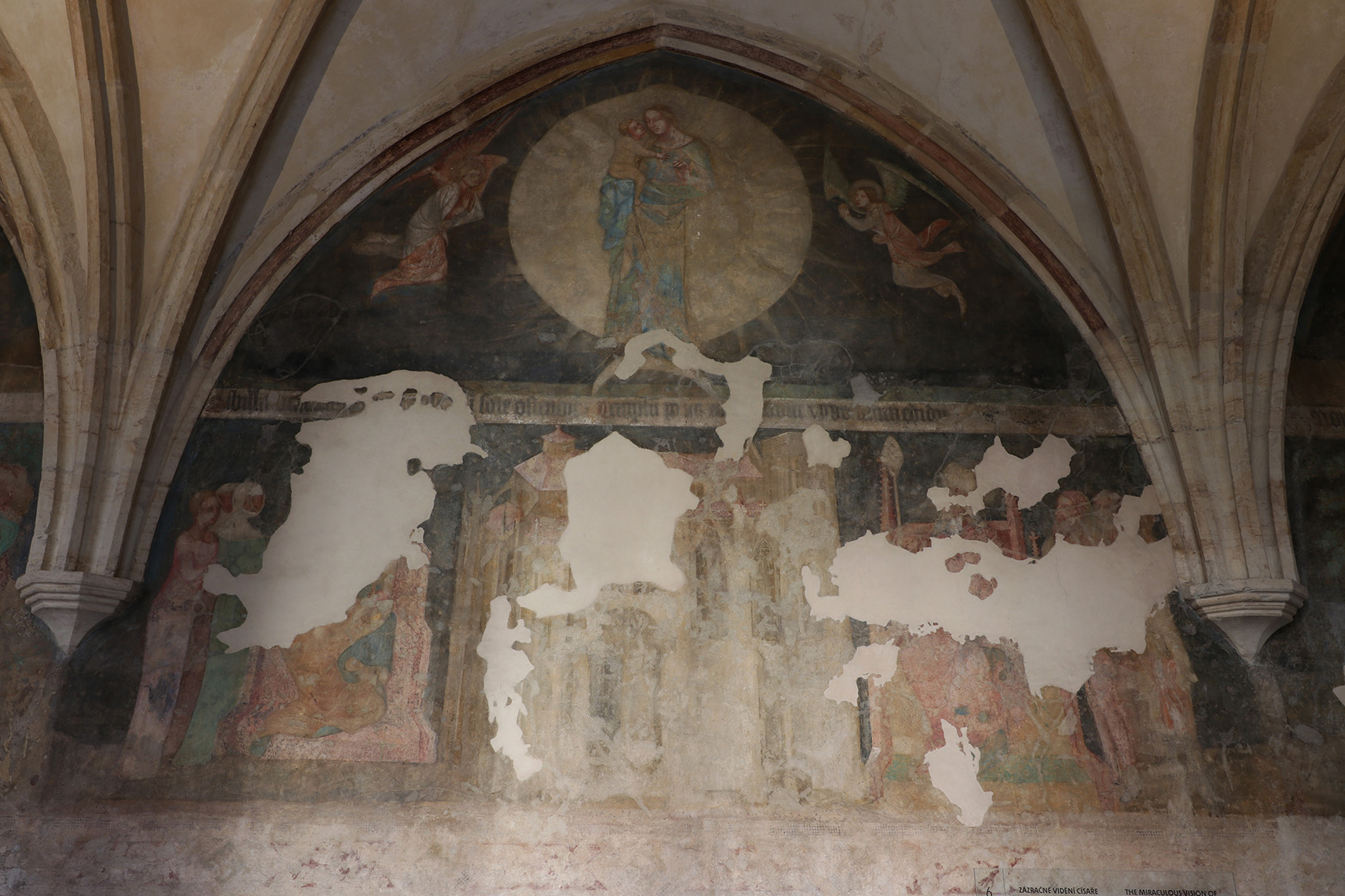
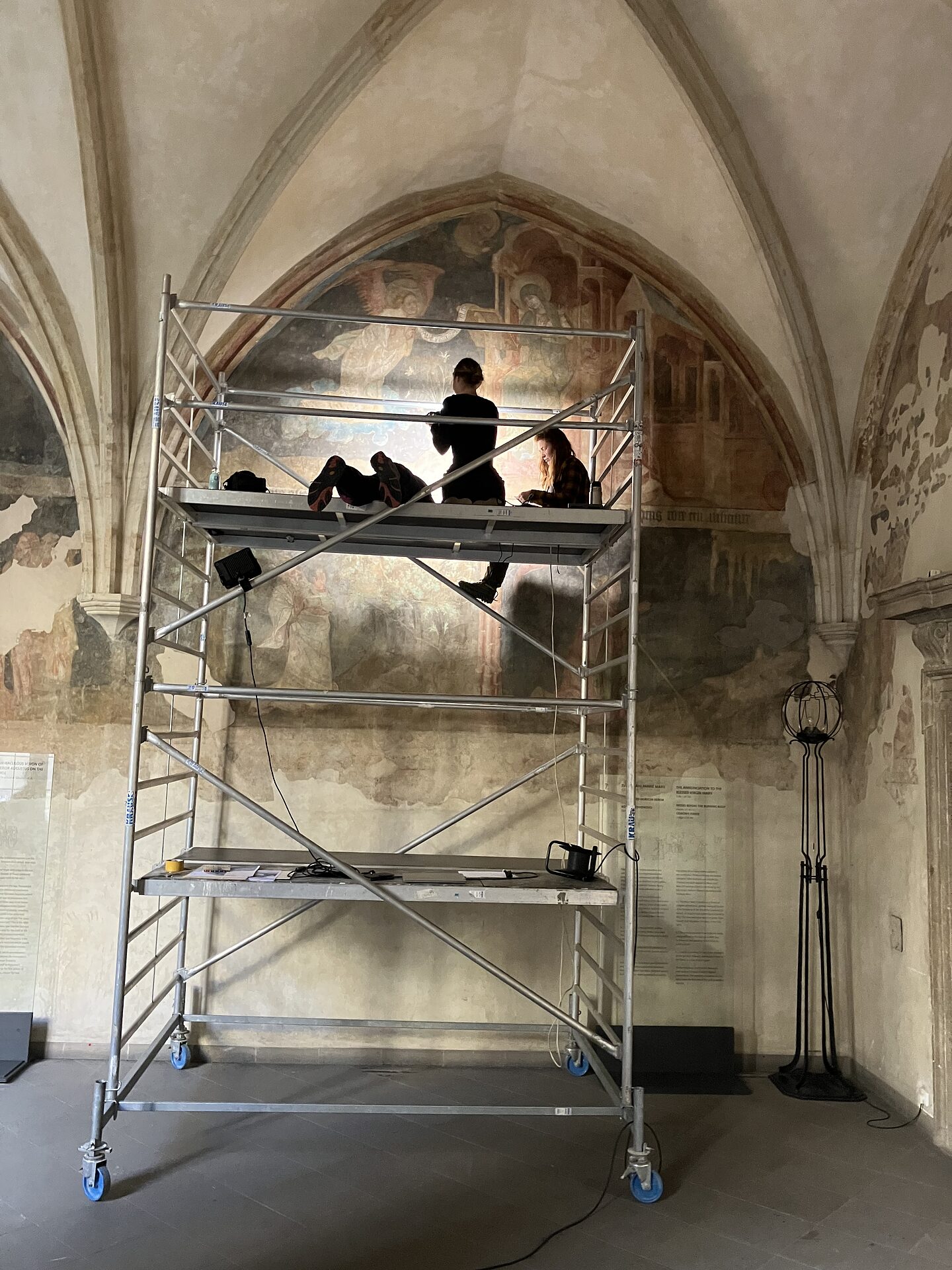
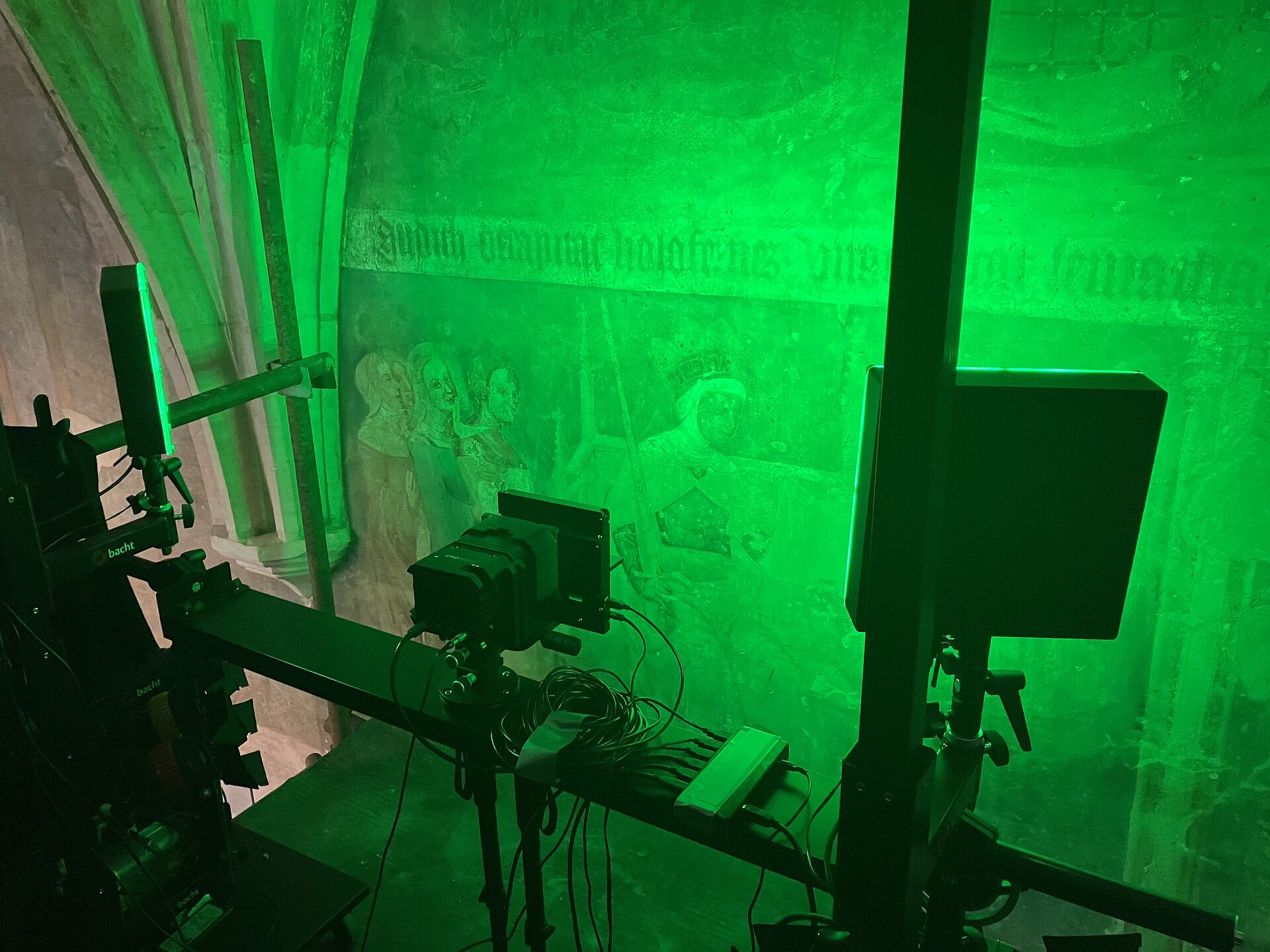
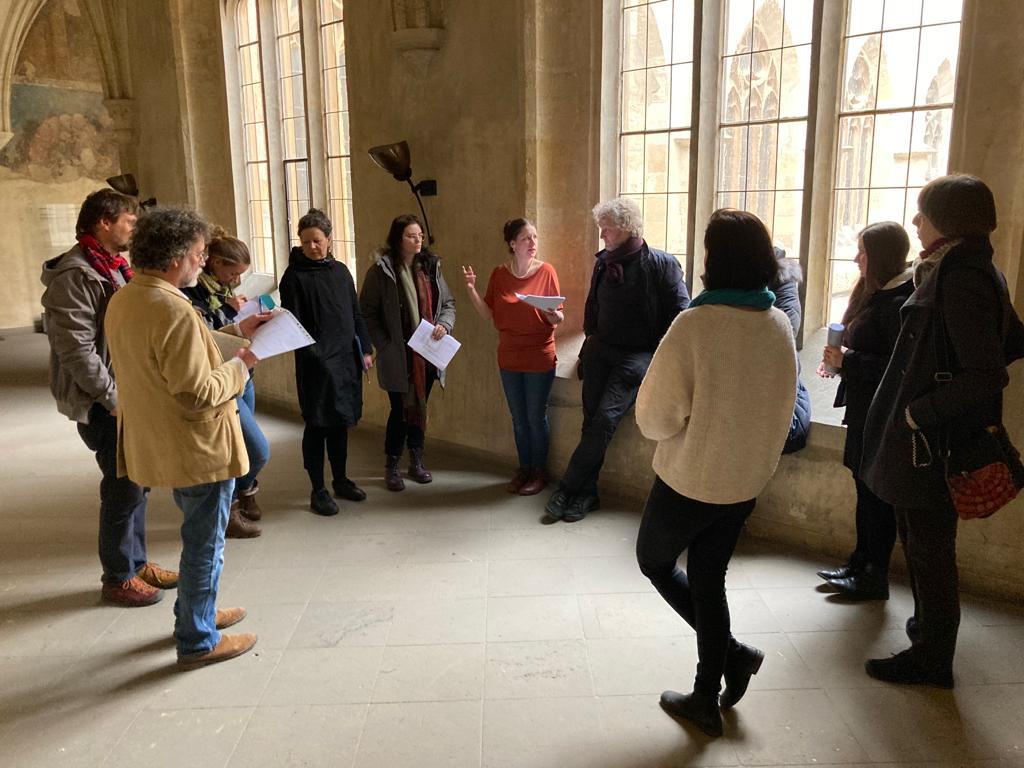
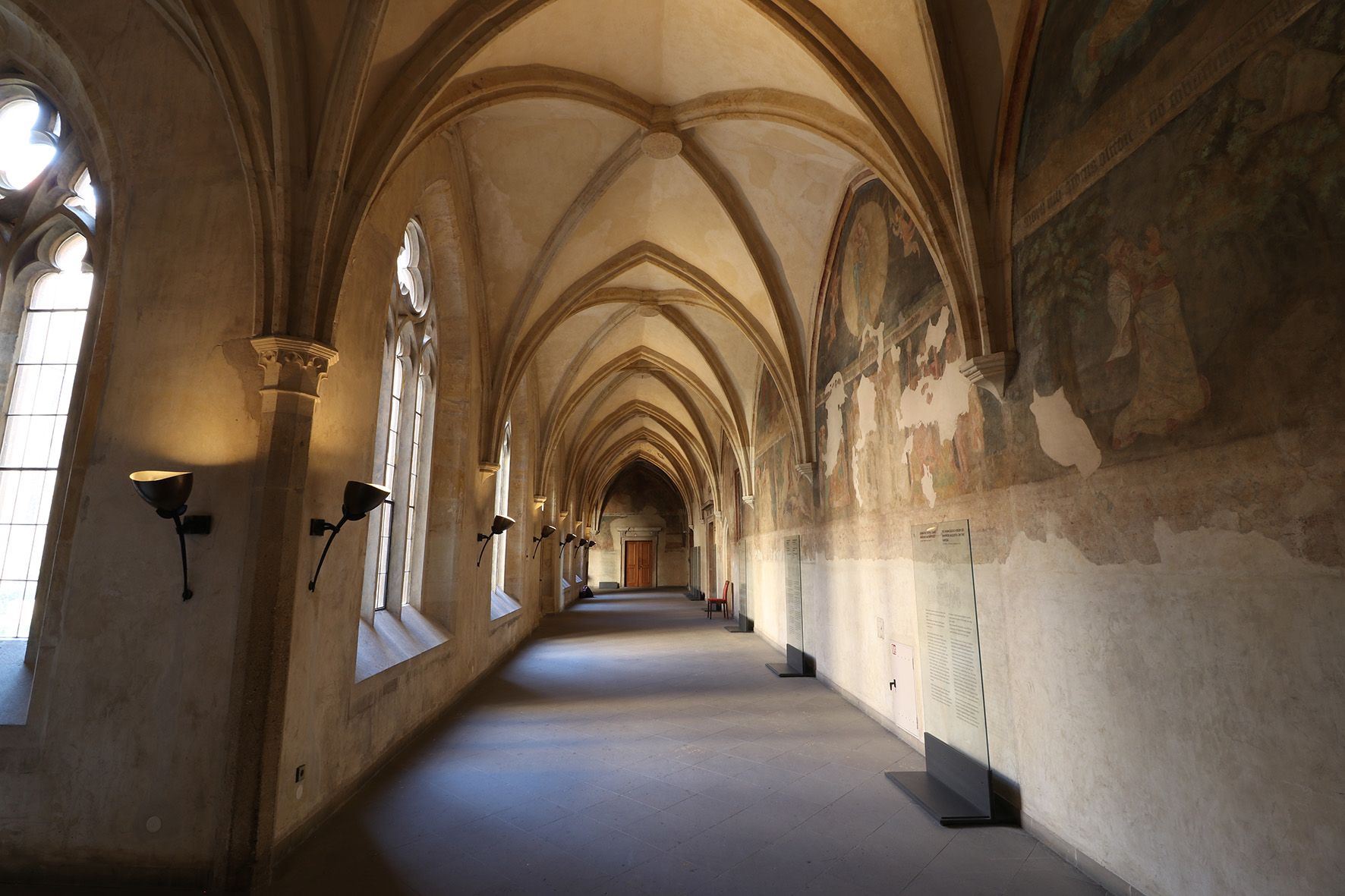
Project implementation:
- Cologne University of Applied Sciences, Cologne Institute of Conservation Sciences (CICS)
- State Academy of Fine Arts Stuttgart, study program for conservation and restoration of mural painting
- University of Pardubice, Faculty of Restoration, Litomyšl, Czech Republic
Places of work: Germany and the Czech Republic
Funding period: January 2023 to December 2025
Project costs: Total volume: 376,036 euros, funding by DBU: 376,036 euros
DBU-AZ: 38228
Status: 03.05.2024
Cover picture: © University of Pardubice, Faculty of Restoration